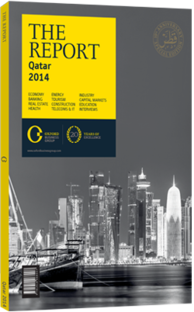OBG talks to Issa bin Mohammed Al Mohannadi, Chairman, Qatar Tourism Authority (QTA)

Interview: Issa bin Mohammed Al Mohannadi
How is strategy being developed in terms of infrastructure in the run-up to the 2022 FIFA World Cup?
ISSA BIN MOHAMMED AL MOHANNADI: We are introducing the National Tourism Sector Strategy 2030 to continue to develop Qatar as a destination while strengthening the tourism industry, which will have many socio-economic benefits on a national scale in addition to helping prepare for hosting the World Cup. There is projected investment of $11.5bn between now and 2030 in the tourism sector as a whole, and $40bn-45bn in tourism-related projects. Gearing up for 2022 means we have to build more rooms, but we have to create a destination at the same time. We are projecting the organic growth in the sector from visitor numbers and planning the amount of rooms based on forecast demand. By doing so we are giving the local market and industry priority, and we will bridge any gaps regarding FIFA requirements. We are exploring options for temporary accommodation, such as cruise ships or floating hotels, to ensure that there is an optimal balance between supply and demand for accommodation following the World Cup.
How concerned are you by the number of hotel rooms projected to come onto the market?
AL MOHANNADI: Growth in the number of visitors per year has been one of the highest and fastest in the region. We are averaging an increase of 11-13% in the number of visitors every year. The world average is 3-4% and we are achieving four times that. In line with FIFA’s requirements, we anticipate having 50,000-60,000 rooms. However, we are developing the local industry in line with demand. We have to ensure we do not impact the private sector or local investors, so we will develop based on organic demand in the market.
Currently we have 14,000 rooms, with another 5000 expected to come to the market in the next four years. This will bring the total to 19,000, and based on demand we will add an additional 11,000 to bring the total to 30,000. We will cover the remainder for FIFA requirements through alternative options, such as cruise ships.
How is QTA working to encourage greater private sector involvement in the industry?
AL MOHANNADI: As the regulator, we are encouraging and educating the private sector on where best to invest, in line with the objectives of the National Tourism Sector Strategy 2030, which considers a larger role for the private sector in developing the industry. For example, in the hospitality sector, sporting events typically do not cater to guests who use four- and five-star hotels, so the medium to lower-end segment is where we are encouraging private sector investment. However, as an authority, we are not directly investing and can only advise investors on the statistical performance of segments, while offering recommendations.
It is important to note that investment in the oneto three-star segment is not just for the World Cup but is also in line with our new strategy to diversify our targeted tourism market toward more budget-conscious regional visitors. To encourage greater private sector involvement, favourable investment laws have been enacted, including laws that allow 100% foreign ownership in most tourism-related projects.
How can Qatar transition from being primarily a business destination to a leisure destination? Is this the plan, or is it more about achieving a balance?
AL MOHANNADI: The focus of the National Tourism Sector Strategy 2030 is to diversify our offerings and cater to the leisure segment. We aim to promote the readiness of our products and focus on positioning. First, we want to continue to build on our strength as a meetings, incentives, conferences and events destination.
Second is developing the country as a family fun and recreation destination to cater to regional visitors. The final positioning of the new strategy is an authentic experience that serves everyone, including Arab and nonArab visitors. The Museum of Islamic Art, Souq Waqif and Katara cannot be franchised, they are genuinely Qatari. Our goal is to position Qatar on the world tourism map as a preferred destination for various segments.
You have reached the limit of premium articles you can view for free.
Choose from the options below to purchase print or digital editions of our Reports. You can also purchase a website subscription giving you unlimited access to all of our Reports online for 12 months.
If you have already purchased this Report or have a website subscription, please login to continue.

